Solutions to Real-Life Money Challenges
You have questions. We have answers.
You’d like to get back into stocks, but how? Or you want to earn more on your savings. Or maybe you just want to get away somewhere warm and cheap. We hear you, and we can help.
Your Credit & Money Management Questions

Sign up for Kiplinger’s Free E-Newsletters
Profit and prosper with the best of expert advice on investing, taxes, retirement, personal finance and more - straight to your e-mail.
Profit and prosper with the best of expert advice - straight to your e-mail.
Your Home Buying and Mortgage Questions
Your Paying for College Questions
INVESTING
Emerging-markets stocks are on a tear. Is it too late to invest in them now?
If you're a long-term investor, there are sound reasons for devoting a portion of your portfolio to emerging markets even if you're late to the rally. That's where the economic growth will be this decade; many developing countries have healthy budget and trade balances. Plus, their consumers are acquisitive and relatively unencumbered by debt. We like three approaches:
T. Rowe Price Emerging Markets Stock (PRMSX), a member of the Kiplinger 25, holds a diversified portfolio of stocks, such as banks in Brazil, insurance companies in China, and electronics makers in South Korea and Taiwan. The fund charges 1.24% a year for expenses.
Matthews Asia Dividend (MAPIX) is a relatively low-volatility way to invest in Asia -- economically, the most promising region of all. The fund, which charges 1.32% a year for expenses, has large positions in steady dividend-paying industries, such as telecommunications and consumer staples. It yields 3.7%.
Over the past decade, bonds denominated in local currencies have performed nearly as well as the corresponding stocks, with a fraction of the risk. Pimco Emerging Local Bond (PLBDX), which yields 5.5%, invests in currencies and bonds in developing nations such as Brazil, Poland, South Africa and Thailand.
Learn more: SPECIAL REPORT: Profit With Emerging Markets
Stocks still terrify me. How can I get back in the market with less risk?
You're in good company. The 2007-09 market debacle so traumatized investors that many have virtually forsworn stocks. Because it's likely that wild gyrations in stocks unnerve you, we'll suggest a few ways to cut risk:
First, invest through a merger fund, a low-risk way of owning stocks. Our favorites, Merger Fund (MERFX) and Arbitrage Fund (ARBFX), buy stocks involved in takeovers that have been announced but haven't yet closed. They make money by capturing the gap between the price they pay for shares after a deal is disclosed and the final price upon consummation (see How to Make Money on Mergers). Annual expenses are 1.47% for Merger and 1.69% for Arbitrage.
Another tack is to buy a fund that owns both stocks and bonds. The lower volatility of balanced funds will help you stay invested in stocks when the market turns sour. Two fine picks are Oakmark Equity & Income (OAKBX) and FPA Crescent (FPACX). Both are run by managers who hate to lose money and will ratchet up the bond allocation if they spot danger in stocks. Oakmark charges 0.8% and FPA 1.23%.
Whichever fund you choose, buy gradually. Dollar-cost averaging -- investing a fixed amount at regular intervals -- cuts risk by taking emotion out of investment decisions. In particular, it prevents you from putting a large sum of money into stocks at an inopportune moment, then pulling it out at the first sign of adversity.
Learn more: 4 Fundamental Ways to Cut Investing Risk
CREDIT & MONEY MANAGEMENT
Bank fees are killing me. Will anybody cut me a break?
Fees at banks are on the rise, and it's getting harder to find free checking, according to Bankrate.com's latest checking survey. Credit unions and online banks generally charge fewer fees and offer better customer service than mega banks do. They also tend to pay higher interest rates on checking and savings.
Ernest Roebuck, a graduate student at Columbia University, in New York City, is fed up with being nickel-and-dimed, and he's ready to ditch his Chase checking account. The clincher came when Roebuck used another bank's ATM to check his balance. He didn't get a receipt, so he checked the balance again -- and was socked with two $2 fees from Chase. When he called to complain, he was told that it was bank policy to charge for the service. "I said, 'Well, it's utterly unacceptable.'" Roebuck is considering using more of his credit union's services and opening an account with ING Direct, an online bank.
Go to Bankrate.com or CheckingFinder.com to find deals. For a credit union near you, go to CUlookup.com.
Learn more: 7 Great Online Banking Deals
My finances are a shambles. How do I choose a good adviser?
Interview several financial advisers (good places to find candidates: the Financial Planning Association and the National Association of Personal Financial Advisors), and get answers to these questions:
Do they have expertise in services you want, such as retirement, tax or college planning? How much work experience do they have?
What degrees or certifications do they hold? The gold standards: certified financial planner (CFP) and chartered financial analyst (CFA). Are they independent, or do they work for a company that might push in-house funds or other products?
How much do they charge? Are they fee-only, or do they earn commissions? Annual fees of 0.75% to 1.25% of assets or hourly fees of $100 to $300 are typical.
Learn more: SPECIAL REPORT: Choosing a Financial Planner
My kid wants a credit card. Should I let him have one?
Think twice. With the new credit-card law, people under the age of 21 will have to provide proof of income to get a card or have a parent or other adult cosign the application. Cosigning for a card -- or making your child an authorized user on one of yours -- may be convenient, but as long as you're paying the bill it won't do much to teach your kids how to manage credit wisely. And if they screw up, your good record is on the line.
It's better if kids first learn to use a debit card and balance a checking account. Once you're confident that they won't overdraw the account, they can move on to a credit card -- preferably on their own.
Learn more: MONEY SMART KIDS: Debit Versus Credit Cards for Kids
I need $10,000 fast. Which accounts should I tap first?
EMERGENCY FUND. Ideally, you have a stash of cash you can access in situations like this. Tapping your savings account is your best bet because breaking into a certificate of deposit early will mean paying a penalty. No rainy-day fund? Consider using a 0% interest-rate courtesy check from your credit-card issuer. Be aware that a 3% transfer fee will cost you $300 on a $10,000 loan.
INVESTMENT ACCOUNT. If you have to sell stocks or mutual funds to raise cash, and you’ve owned them for a year or less, the profit will be taxed at your ordinary income-tax rate. Sell them after more than a year and your profit will be taxed at a maximum 15% capital-gains rate. (And you’ll pay no capital-gains tax if you’re in the 10% or 15% income-tax bracket.)
HOME-EQUITY LINE. Rates on home-equity lines of credit (HELOCs) are usually close to the prime rate, currently 3.25%. The interest is tax-deductible, just like your mortgage interest. If you don’t already have a HELOC, it may not be worth the hundreds of dollars in setup expenses, which typically include a home-appraisal fee, an application fee and closing costs.
BORROW FROM YOUR 401(K). You can borrow up to half of your account balance, up to $50,000. You usually have to pay back the money within five years—or within 60 days after you leave or lose your job. If not, it will be subject to state and federal taxes plus a 10% penalty if you are younger than 59½ (or younger than 55 if you leave your job).
TAP YOUR IRA. This is your most expensive option. You’ll owe state and federal taxes on your withdrawal. But you can avoid the extra 10% early-withdrawal penalty if you are 59½ or older or if you use the money to pay for certain qualified expenses, including college costs, a first home (up to $10,000) or medical bills in excess of 7.5% of your adjusted gross income.
Learn more: 12 Ways to Get Cash Fast
My wallet was stolen. Will my identity be next?
Not necessarily, if you make the right moves. After you contact your banks and credit-card issuers to let them know that your cards were stolen, file a police report. Then place a fraud alert with one of the three credit-reporting agencies: Equifax.com, Experian.com or TransUnion.com. If you notify one, it will notify the other two.
An initial fraud alert lasts for 90 days and entitles you to a free copy of your credit report from each bureau. To extend the alert, you will have to produce the police report.
Still worried? Try www.myidscore.com -- a free site that takes your name, address, birth date and other personal data and scans its database to give you a score representing the likelihood that you'll become a victim of ID theft.
Learn more: QUIZ: Is Your Identity at Risk?
My money fund is paying zilch. Where can I get better yields on savings?
Start by looking online. Ally Bank is paying 1.5% on savings -- way north of the 0.23% average rate on money-market funds. It's best to keep six months' worth of living expenses in such risk-free accounts.
You can ratchet up the risk a little on the rest of your cash with a high-quality, short-term bond fund. Vanguard Short-Term Investment-Grade (VFSTX) has a current yield of 2.4% and a $3,000 minimum investment.
For those in the upper tax brackets, Fidelity Intermediate Municipal Income (FLTMX) is a good choice. It currently yields 2.7% (a tax-equivalent yield of 4.2% if you're in the 35% tax bracket) and has a $10,000 minimum investment.
For a little more reward, consider Fidelity GNMA (FGMNX), which owns packages of home mortgages. Ginnie Maes are backed by the full faith and credit of the U.S. The fund returned 6.9% in 2009 and yields 3.1%. Minimum investment is $2,500.
Learn more: Earn 4% on Your Savings
I'm worried about my credit score. What's the effect if...
My credit-card company closes an account I rarely used that had no balance. I have two other active long-term card accounts. Effect: Minimal, unless your balances now top 50% of your remaining credit limits.
I skip payments to the credit-card company two months in a row. Effect: Significant, especially if your score is above 700. (Credit-card payments that are less than 30 days late aren't reported to the credit bureaus.)
I open two retail-store cards to take advantage of additional discounts. Effect: Minimal
I stop using my plastic altogether and switch exclusively to my bank debit card. Effect: None (temporarily), but your credit score could disappear if you have no other loans.
Learn more: QUIZ: The Truth About Credit & Debt
TAXES
My energy bills are sky-high. Have I missed the boat on green tax breaks and incentives?
You can get a rebate for a new appliance as long as your state's stimulus funding lasts. Specifics vary by state, but you can qualify for rebates of $50 to $250 or more if you replace an older appliance with an Energy Star model. There are also rewards for recycling old models. All state programs will launch by April.
Take an energy-efficient tax credit of 30%, up to $1,500, of the cost of qualifying equipment you purchase by December 31, 2010. On the list are windows; doors; water heaters; insulation; heating and air-conditioning equipment; and a new roof for an existing, primary home.
Nab a renewable-energy tax credit of 30% of the total cost to buy and install a geothermal heat pump, a residential wind turbine or a solar-energy system (including a solar-powered water heater). The credits expire at the end of 2016. (For more information on incentives and tax credits, see www.energystar.gov.)
Learn more: 8 Ways the Feds Will Pay You to Go Green
I started my own business last year. How do I handle the taxes?
Heidi Johnson of Washington, D.C., has been a pediatric nurse practitioner for 15 years. After her 3-year-old twins started school a few months ago, Johnson left her job at a pediatrician's office and launched her own business making house calls to families on Capitol Hill. "I haven't made much money yet," she says, "but I'm wondering what do I need to know about taxes and what can I deduct?"
Becoming self-employed is a tempting alternative for entrepreneurial spirits like Johnson as well as workers who have lost their jobs during the recession. But it means dealing with a whole new layer of tax hassles. The good news is that you can deduct a lot of expenses, especially when you first start your business.
You'll need to submit Schedule C to report your business income and Schedule SE to figure your self-employment tax if your net earnings for the year are more than $400. But you can deduct the cost of equipment you buy for your office, such as a computer and phone system, plus what you pay for advertising, accounting services, travel and fees for professional conferences, as well as 55 cents a mile for business travel in 2009 (or 50 cents per mile for 2010). You can also write off the cost of renting an office or, if you use space in your home exclusively for your business, take a home-office deduction and write off part of your mortgage interest or rent, utilities, and home insurance.
You can deduct most expenses entirely in the year you incur them, unless they are larger than your business's net income for the year. In that case, you may be better off depreciating some equipment costs over several years, says Robin Christian, senior tax analyst with the Tax & Accounting business of Thomson Reuters.
If you expect to owe at least $1,000 in tax for the year, you may need to file quarterly taxes to avoid a penalty (see Form 1040-ES at www.irs.gov).
Learn more: Kiplinger.com Business Taxes index
I heard the estate tax expired. Do I need to change my estate plan?
The federal estate tax expired on New Year's Eve, so in 2010 (at least for now), there is no tax. But the majority of Americans won't notice the change because they have estates too small to be affected.
Congress had planned to extend the 2009 provisions that exempt estates valued at $3.5 million or less ($7 million for married couples) and tax transfers above that level at 45%. But the patient died on the table while lawmakers were busy debating health-care reform. The tax will come roaring back on its own in 2011 -- or even sooner if Congress acts to reinstate it retroactively, as expected.
The demise of the estate tax comes with a catch. Previously, assets were inherited on a stepped-up basis. For example, if you bought a stock for $10 a share and it was worth $100 a share when you died, the $100 became the basis for your heirs, effectively wiping out taxes on any appreciation that occurred during your lifetime. Now, heirs of large estates inherit the $10 basis and owe capital-gains taxes on the $90-per-share appreciation when they sell. But even this rule is unlikely to be enforced because Congress is expected to reinstate the estate tax -- and the stepped-up basis rule -- retroactive to January 1, 2010.
Learn more: FAQs on the Death of the Estate Tax
HOME BUYING AND MORTGAGES
I owe way more on my mortgage than my house is worth. Should I walk away?
Walking away should be a last resort. First try a mortgage modification (call your lender's loss-mitigation department or see www.makinghomeaffordable.gov) or a short sale (selling your home with the lender's okay for less than you owe on your mortgage). You may have to stop making your mortgage payments to pressure your lender to sign off on a short sale. If you can't sell the home, you may be forced into foreclosure.
But whether you pursue a short sale or end up in foreclosure, your lender will report your mortgage account as "settled," meaning you agreed to settle the debt for less than you owed. Your credit history will be blemished for seven years, and your credit score will take a major hit. If you want to buy a new home with a mortgage backed by Fannie Mae or Freddie Mac or insured by the Federal Housing Administration -- probably your only options -- you'll have to wait three to five years after a foreclosure and two to four years after a short sale related to a delinquent mortgage.
Learn more: Fighting a Foreclosure
I'm finally ready to buy a home. How much cash do I need?
It's a good time to buy, especially if you qualify for the tax credit of up to $8,000 available to home buyers who sign a contract by April 30. But you'll need more savings than in the boom years to get a mortgage. If you're buying a single-family home that you'll live in, you'll generally have to put down at least 5% of the purchase price for a conforming mortgage (up to $417,000) backed by Freddie Mac or Fannie Mae. For jumbo loans, expect to pony up 10%. To avoid private mortgage insurance, you must put down at least 20%. Or consider a Federal Housing Administration (FHA) loan, which requires only 3.5% down.
Plan to pay another 2% to 7% of the purchase price for closing costs. Borrowers who qualify for the home-buyer tax credit can apply it toward closing costs or use it to beef up their down payment beyond the required minimum.
Learn more: FAQs on the New Home-Buyer Tax Credit
PAYING FOR COLLEGE
I lost my job. Can I get free money to go back to school?
Chances are good. For starters, fill out the Free Application for Federal Student Aid (FAFSA), which puts you in line for federal and state grants as well as federal student loans. The federal financial-aid formula uses your income from the previous tax year in calculating your eligibility for need-based aid. In light of your job loss, ask the school's financial-aid office to consider your estimated income for the upcoming academic year in determining your award (see studentaid.ed.gov).
Also look into educational tax breaks, such as the new American Opportunity Credit. The credit is worth up to $2,500, part of which is refundable even if you owe no tax. Other tax breaks include the Lifetime Learning credit and the deduction for higher edu-cation. For details, see Tax Benefits for Education at www.irs.gov.
Professional associations, national scholarship programs and some colleges offer scholarships geared to older students. Explore the possibilities at www.fastweb.com, which lists more than 200 awards restricted to applicants 25 and older.
Learn more: Money for Grad School
INSURANCE
OMG, my teen started driving. How can I save on insurance?
For starters, raise your collision deductibles to $1,000, which lowers your rates and prevents you from filing small claims that could jeopardize a claims-free discount. Christine and Bob Throckmorton of Seattle were able to lower their annual auto premiums from $5,749 to $3,957 about a year after their son Joseph turned 16 and joined his two brothers as family drivers. The Throckmortons dropped collision-and-comprehensive coverage entirely because their old cars were worth little more than the deductible (find car values at Kelley Blue Book). The boys all earn B averages in school, which entitles each of them to a good-student discount. And when older sons Matthew and Timothy moved more than 100 miles away to go to college, they got another discount.
Premiums vary a lot, so work with an independent agent (see the Independent Insurance Agents & Brokers of America) to compare quotes, or compare rates at www.insurancerates.com. You usually get a discount for buying your homeowners and auto insurance from the same company, and a longtime insurer will often keep a lid on rate increases if your kids have a claim, says Trisha Mujadin, an independent agent in Seattle.
Learn more: ASK KIM: 8 Ways to Cut Insurance Costs for Teen Drivers
LIVING
My attic is crammed with stuff. Is any of it worth selling?
If you find any toys for boys -- especially from the 1950s and 1960s -- you could make some money, says Terry Kovel, a collectibles columnist and author of price guides. Robot and space toys and 1950s trains are also selling well.
Art pottery is one of the hottest collectibles right now -- even if a piece is chipped. Sterling silver from famous makers (such as Tiffany, Jensen and Gorham), Griswold cast-iron skillets and "anything your grandmother used in the kitchen from the 1930s to 1950s" is also popular.
You can't sell most Hummel or Royal Doulton figurines now because so many people bought them. And there's no hope for Beanie Babies or baseball cards, except for a few special cards in mint condition.
Look up sales prices on eBay or on Kovels.com, which posts photos and a directory of markings to help you identify your objects. You can sell your objects on eBay or at other online auction sites. Selling to a dealer may be easiest, but you'll usually get 50% or less of the retail price.
Get Kiplinger Today newsletter — free
Profit and prosper with the best of Kiplinger's advice on investing, taxes, retirement, personal finance and much more. Delivered daily. Enter your email in the box and click Sign Me Up.
-
 Stock Market Today: Stocks Are Mixed Before Liberation Day
Stock Market Today: Stocks Are Mixed Before Liberation DayMarkets are getting into the freewheeling rhythm of a second Trump administration.
By David Dittman Published
-
 How to Invest in Sports
How to Invest in SportsIf it's springtime, Forbes is out with its annual list of baseball franchise values. The billions involved might make you wonder how to invest in sports.
By David Dittman Published
-
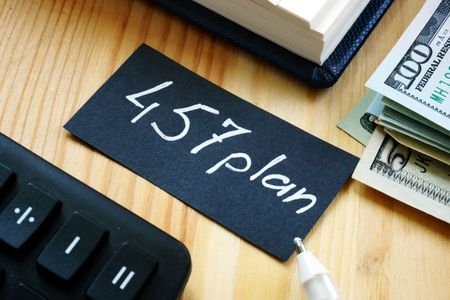 457 Plan Contribution Limits for 2025
457 Plan Contribution Limits for 2025Retirement plans There are higher 457 plan contribution limits for state and local government workers in 2025. That's good news for state and local government employees
By Kathryn Pomroy Last updated
-
 Medicare Basics: 11 Things You Need to Know
Medicare Basics: 11 Things You Need to KnowMedicare There's Medicare Part A, Part B, Part D, Medigap plans, Medicare Advantage plans and so on. We sort out the confusion about signing up for Medicare — and much more.
By Catherine Siskos Last updated
-
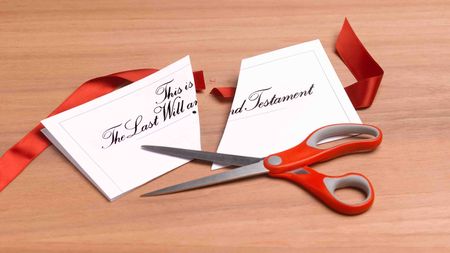 The Seven Worst Assets to Leave Your Kids or Grandkids
The Seven Worst Assets to Leave Your Kids or Grandkidsinheritance Leaving these assets to your loved ones may be more trouble than it’s worth. Here's how to avoid adding to their grief after you're gone.
By David Rodeck Last updated
-
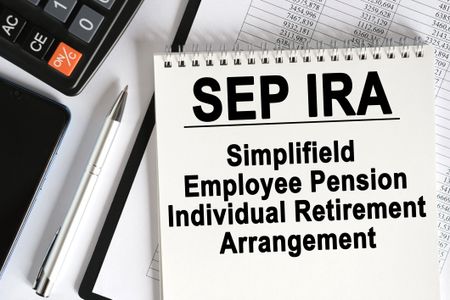 SEP IRA Contribution Limits for 2025
SEP IRA Contribution Limits for 2025SEP IRA A good option for small business owners, SEP IRAs allow individual annual contributions of as much as $69,000 in 2024 and $70,000 in 2025..
By Jackie Stewart Last updated
-
 Roth IRA Contribution Limits for 2025
Roth IRA Contribution Limits for 2025Roth IRAs Roth IRA contribution limits have gone up. Here's what you need to know.
By Jackie Stewart Last updated
-
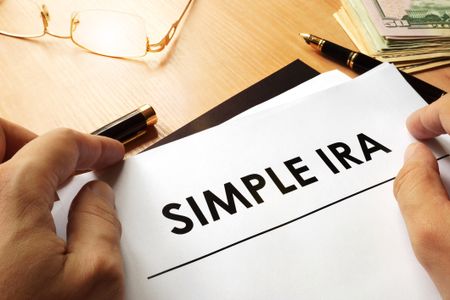 SIMPLE IRA Contribution Limits for 2025
SIMPLE IRA Contribution Limits for 2025simple IRA The SIMPLE IRA contribution limit increased by $500 for 2025. Workers at small businesses can contribute up to $16,500 or $20,000 if 50 or over and $21,750 if 60-63.
By Jackie Stewart Last updated
-
 457 Contribution Limits for 2024
457 Contribution Limits for 2024retirement plans State and local government workers can contribute more to their 457 plans in 2024 than in 2023.
By Jackie Stewart Published
-
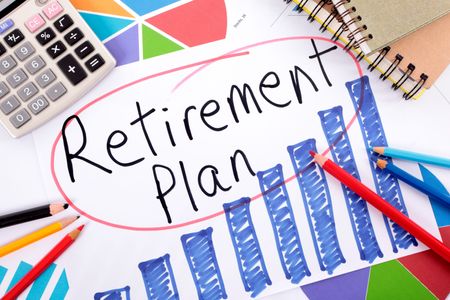 Roth 401(k) Contribution Limits for 2025
Roth 401(k) Contribution Limits for 2025retirement plans The Roth 401(k) contribution limit for 2025 increased, and workers who are 50 and older can save even more.
By Jackie Stewart Last updated